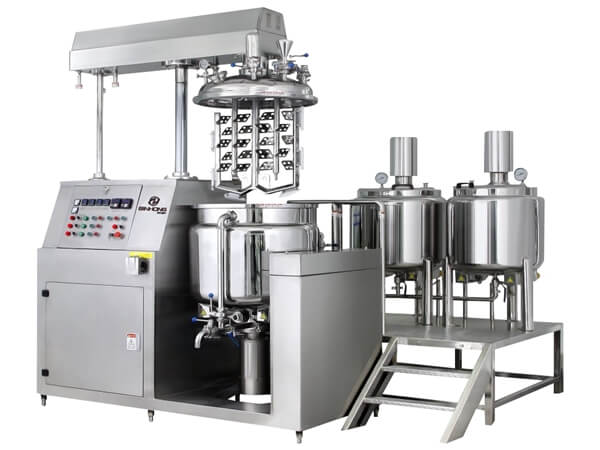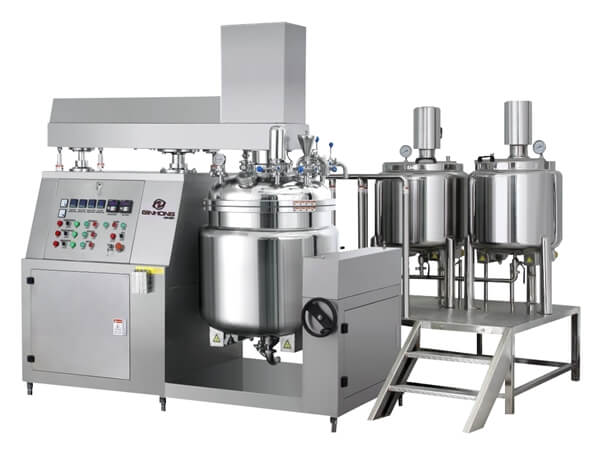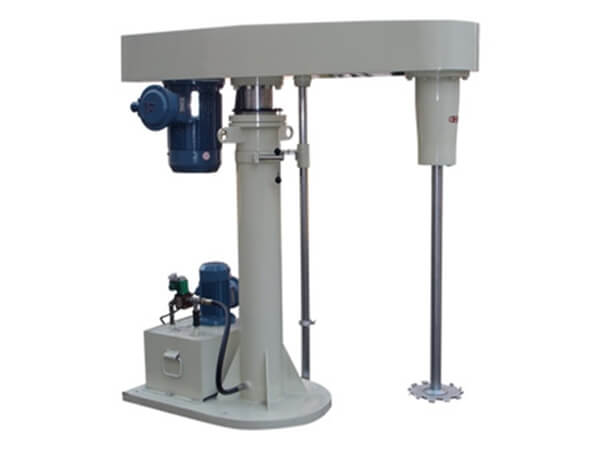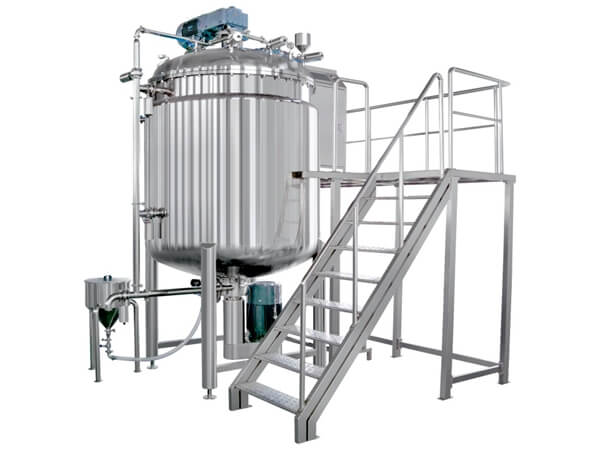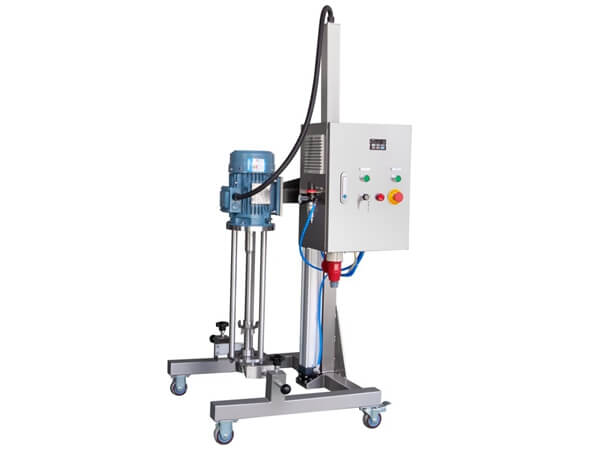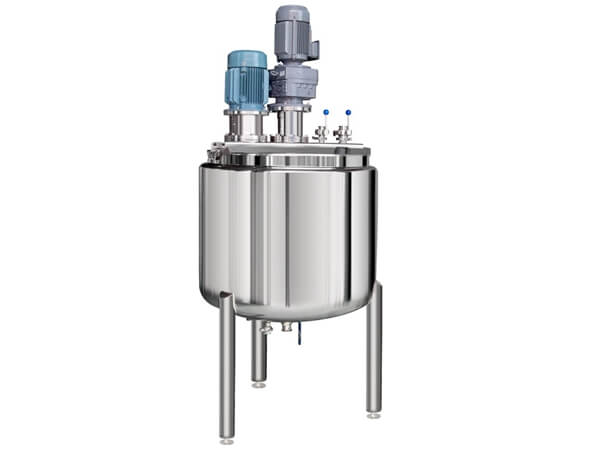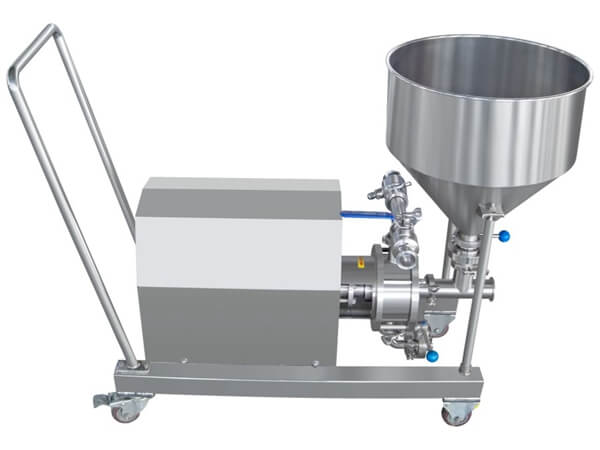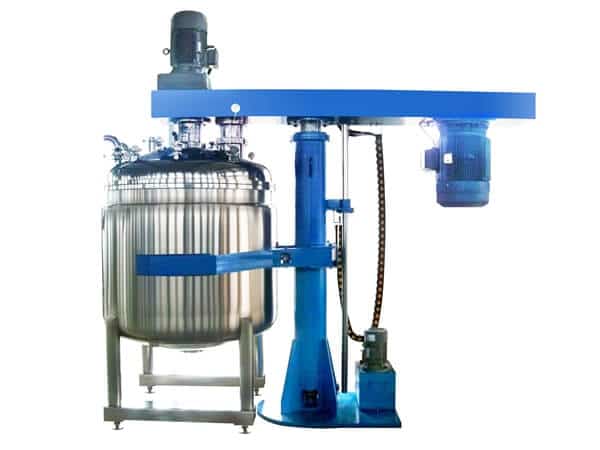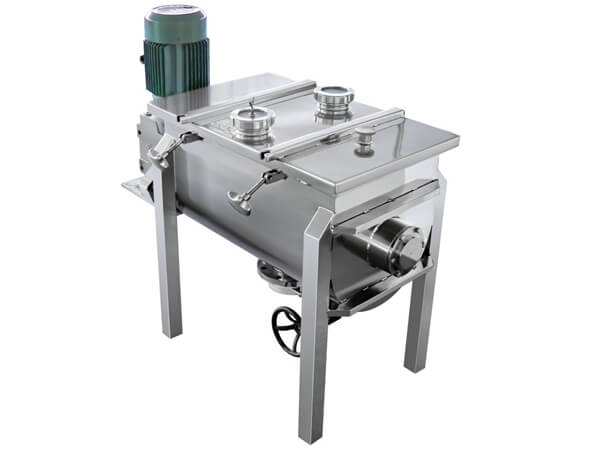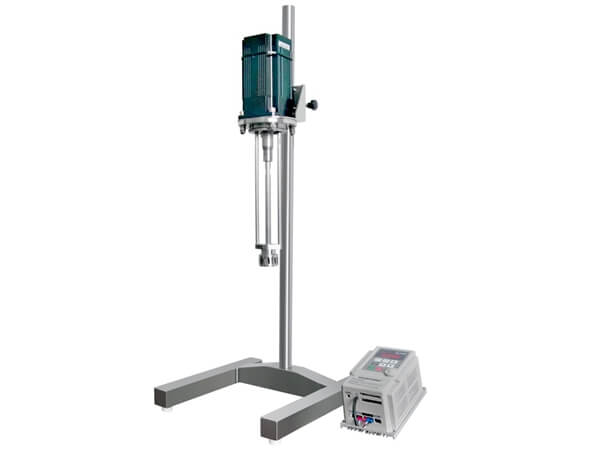Blending
Like dissolves like, as the famous chemistry principle goes. Blending can be easily accomplished for miscible liquids having similar viscosities, but when we’re talking far differences in viscosities, blending operations can be much more tricky.
In its simplest context, Blending is an operation that involves combining or mixing things together. In industrial plants, industrial mixing equipment such as Stainless Steel blenders, are used in blending ingredients with varying viscosities. These industrial blenders are equipped with mixing blades, ribbons, impellers or propellers to enforce a positive mixing action within resulting into a uniform blend.

What is the Process of Blending?
Blenders are utilized within the restorative, pharmaceutical, chemical, agrarian, mash and paper, car, water treatment, cement and sealant business. Blending operation can be of two essential sorts, such as mechanical mixing and gas flow mixing.
Mechanical blending is conducted in industrial mixers to uniformly coat powder particles with liquid and oils. Whereas gas flow mixing or liquid-gas mixing involves gas to flow in the system allowing the transfer of mass. This is a popular process in motionless mixers where a pump provides the driving force.
What is the Difference Between Blending and Mixing?
The term “Mix” has an exceptionally comparable meaning to “blend”. In some cases, mix and blend can be replaceable. But “mix” is a lot more popularly utilized in nourishment industry especially when alluding to kitchen machines.
Mixing is a process of combining materials and is generally a gentle process compared to blending. Blending is the method of combining two or more distinct materials to induce a homogeneous item. Mixing implies to combine materials or fixings together to make mass or a single component.
What is Blending Process in a Refinery?
The major refinery items delivered by mixing preparations are gasoline, warming oils, and diesel fuels. Blending is the heart of the operation in refinery processes. In its operation, ingredients such as the seeds, oils, and organic matter are blended in such a critical way as to produce the best result in terms of volumetric proportioning of the solution.
What is Continuous Powder Blending?
Continuous powder blending is an operation where raw materials are added into a processing unit and blended before conveying into the outlet. The most important function of this operation is the behavior of blending ingredients, as it is critical that components must react at certain points during the operation.
Powder mixing is an important operation in industrial processing. Furthermore, pharmaceutical industries are raving to get the best powder mixing equipment to produce the substantial mixture for medicines, pills, and many more, that assures the safety and well-being of thousands.
Continuous powder blending also plays a vital role in cosmetic, chemical and many food industries.
How Can Ginhong Quality Blender Mixers Help Your Industry?
We offer industrial mixers such as Vacuum Emulsifying Homogenizer, Lab mixers, Planetary Mixers, Multi-Shaft Mixers and High Shear Mixers that can easily and efficiently blend ingredients.
The main structure of our mixer has a rotor/stator assembly that draws the ingredients into the workhead by the high speed rotation of the rotor. Through the positive action encompassed by the powerful centrifugal force of the mixer, the powders, solvents and other ingredients, no matter how heavy and bulky they are, are driven into a narrow gap between the rotor and stator.
Effective particle size reduction, enhanced texture and consistent blend is achieved with increased emulsion stability. You can assure that yield of ingredients are maximized with reduced waste, increasing your return of investments.
Emulsify
When two fluids of diverse thicknesses emulsify, they combine to one single smooth substance.
What Does Emulsify Mean?
Emulsify is a word portraying a physical response. This means that two or more substances are emulsified by high speed and physical constraints such as blending, mixing, scattering and homogenizing. Emulsify is characterized as to include drops of a fluid to another fluid to create a suspension that can't be blended together.
What is the Process of Emulsification?
Emulsification is the method by which the scattered stage is broken up into little beads. Ordinarily a coarse premix is made by fast mixing of the ingredients. This can be adequate to break up the scattered stage into expansive beads, and permit adsorption of the emulsifiers earlier to last emulsification.
What is the Appearance and Properties of a thoroughly emulsified mixture?
The key to making a steady emulsion is getting the finest conceivable bead measure. The more shear vitality presented into the blend, the smaller the suspended beads will end up, making a fine steady emulsion.

How Can Ginhong Vacuum Emulsifier Mixer Help Your Industry?
Our Vacuum Emulsifier Homogenizer is a complete system for making viscous emulsion, dispersion and suspension. We have served cosmetic, pharmaceutical, food and chemical industries with this uniquely built and critically-engineered industrial mixer. Vacuum is produced in the mixer that improves the performance of mixing and product handling, achieving the best mixing results.
Dissolve
What Does Dissolve Mean?
Dissolve simply means to make a solution. In a broader sense, dissolving involves causing a solute to pass into a solution. In chemistry, this process is called dissolution.
As far as industrial mixers go, dissolving is one of the key principle in mixing. Powders need to dissolve efficiently in liquids to make a uniform solution. This might look too easy, but remember that powders tend to stick in walls or form lumps that is actually disagreeable in any industrial process. That is why a high targeted shear is needed in industrial mixers to do its job of making lump-free, fish-eye free, uniform blends.

What is a Solution?
Our Vacuum Emulsifier Homogenizer is a complete system for making viscous emulsion, dispersion and suspension. We have served cosmetic, pharmaceutical, food and chemical industries with this uniquely built and critically-engineered industrial mixer. Vacuum is produced in the mixer that improves the performance of mixing and product handling, achieving the best mixing results.
Solutions are substances that are dissolved in liquid. To determine a solution, one can easily see how filtration does no good in separating two or more different substances in the mixture. A solution is composed of a solute and a solvent.
In Lipstick Manufacturing, Nail polish manufacturing or other cosmetic manufacturing processes, toluene, Butyl Acetate and other liquids are used as solvents to dissolve pigments and other solid substances.
What are the Factors that Affect Solubility of Substances in a Mixture?
Solubility is the amount of solute that would dissolve in a solvent. In mixing applications, industrial agitators does the trick of dissolving globular solids in solvents and oils through the following factors being addressed:
Heating is increased through a heating jacket to increase the solubility of solids, as temperature affects solubility of materials.
Kinetic energy through the high shear action or calculated agitation is implemented that allows solutes to break apart easily.
Vibration (kinetic intermolecular movement through kinetic energy) plays a role in causing the solute molecules to break its molecular bond of holding tight to each other.
How to Disperse Xanthan Gum in Water for Industrial Mixing Applications?
Xanthan Gum is commonly used as a thickening and stabilizing agent in many mixing applications. Xanthan gum has a gel structure in water when it is mixed with other rheology modifiers.
Temperature affects the solubility of Xanthan gum as it is dispersed in the liquid, whether hot or cold. But the thing that we are keen about is how to optimize mixing efficiency by eliminating the lump-forming tendency of Xanthan gum. Thus, dispersion and hydration methods can be used effectively to eliminated the problem. In addition, the following can also be done:
- Adding slowly the powder in the vortex. Upon dispersion, mixing should be allowed to continue to hydrate the product.
- Sugars and other powdery solid products can be added with the gum to reduce the tendency of agglomerates forming.
- Oils can be used to disperse the gum before hydrating it.
How can Ginhong Mixers Attain Complete Solid Dispersion in Mixing Applications?
Our Planetary and Multi-Shaft Mixers can be used in applications where ingredient viscosities are very high (higher than 750,000 cp up to millions of centipoises).
Ginhong’s Planetary Mixer blades, in particular, have two types of mixing movements: revolving on a vertical axis at high speed and at the same time, this vertical axis rotates around the center of the bowl at a relatively lower speed.
Additives, binders and adhesives are completely mixed and dissolved into the liquid ingredients. The heat from the jacket also aids in dissolving products in the mixer, thus achieving complete elimination of voids and a uniform solution.
Homogenize
Homogenization is a process that happens at the same time with emulsification while ingredients are being scattered to a uniform state. In the process of mixing ingredients in an industrial agitator, components are blended, scattered, emulsified and homogenized by the action of an intense hydraulic shear.
What is the Process of Homogenization?
Homogenization,a prepare of diminishing a substance, such as the fat globules in a drain, to greatly little particles and conveying it consistently all through a liquid, such as a drain. The method includes driving the drain through little openings beneath the tall weight, hence breaking up the fat globules.
A high shear homogenizer incorporates a high fluid shear inside an industrial mixer to emulsify and homogenize the material. The fluid will undergo shear at the point where there’s a difference in velocity of one area of it to another area. Thus, the materials which are conveyed towards the top of the mixer tank by the force of the revolving lower blades will then be subjected to the powerful shearing centrifugal force of the upper blades.
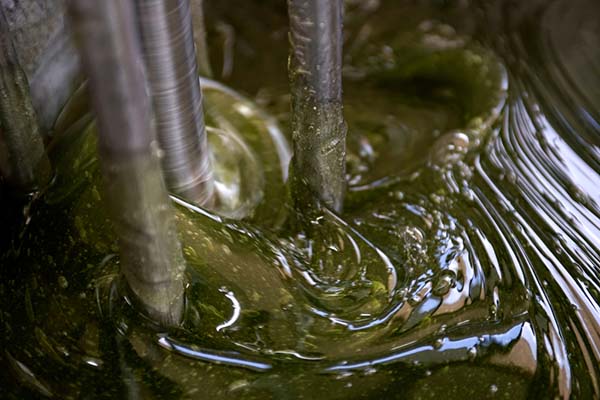
What are the Benefits of Homogenizing?
Homogenization is progressively utilized as a strategy of nourishment generation through proper and calculated mixing and is a vital industrial process over other preferences. We simply make the food digestible as the food preparation is agglomerate-free and lump-free.
The straightforward capability to make good nourishment-handling results can guarantee great advantage over competitors.
Like with nourishment results, mechanical homogenizers are moreover successful as a nourishment conservation strategy. In reality, the strategy proceeds to extend in ubiquity over conventionally warm treatment for its high level of work.
What is a "homogenized" milk?
A homogenized milk is a kind of milk that is free from fats. During processing in an industrial mixer, homogenization breaks down the the fat globules and after which, the milk is skimmed. This is a great benefit for people who are medically reducing fat intake.
Ginhong offers a Vacuum Emulsification Mixer for making Milk that produces quality, homogenized, uniform mix milk that comes for a cheaper price than other competitor mixers.
How Can Ginhong Homogenizer Mixers Help Your Industry?
As a leading China industrial mixer manufacturer and supplier, Ginhong delivers quality-made homogenizers at a very reasonably lower price than competitors. We design and manufacture Vacuum Emulsifying Homogenizers, High Shear Mixers that assures the following in the homogenizing process:
- Our high pressure, high shear homogenizers disrupt microbial activity by the correct pressure and temperature delivery. The growth and inhibition of a variety of bacteria, yeast, and mycelia are eliminated during processing.
- Our homogenizers work by forcing cell suspensions in a narrow orifice under pressure. In turn, cell suspensions are eliminated at high velocity on a hard-impact ring or against another high-velocity stream of cells coming from the opposite direction.
- By the optimum pressure drop, calculated turbulent eddies and strong shearing forces, the cell suspensions are eliminated.
With our experts in the field of manufacturing industrial mixers, we have set a high motion on effectively improving our Homogenizing Mixers efficiency through:
- Proper Inlet and Outlet Pressure
- Proper Temperature
- Accurate Number of passes, depending on material characteristics
- Correct Valve and impingement design
- Optimum Flow rate
Hydrate
Hydrate is a term utilized in inorganic chemistry and natural chemistry to demonstrate that a substance contains water.
What Does Hydrate Mean?
A Hydrate is a chemical compound containing water that is combined with a substance and can more often than not be removed without changing the structure of the substance.
How are Hydrates Used in Real Life?
Hydrates are utilized in numerous applications such as in fabricating wallboard, cement, and mortar of paris.
Borax (utilized in numerous corrective, cleaning and clothing items) and Epsom salt (utilized as a normal curve and exfoliates).
Hydrates are regularly utilized in skin care items to implant dampness into the body.
When is Hydration Important in Mixing Applications?
Hydration is a process requiring a degree of shear to enact and get its greatest valour. In mixing applications, when a powder is introduced into the vessel, mixing is continued with a certain pressure and temperature to allow hydration of the product.
A typical agitator simply washes the surface of the agglomerates and only hydrating the uppermost layer. It cannot achieve amount of hydration in a mixture that is why it is recommended that an industrial mixer with a high amount of shearing action is to be used when blending process ingredients to ensure hydration of necessary ingredients.
How Ginhong Mixers Can Help You in Complete Hydration of Mixtures?
Our High Shear Mixers assures rapid dispersion of powders upon pouring it into the mixer. This immediately disintegrates agglomerates and lumps and maximizes the surface area of the solid powder particles over the liquid. In only a short period of time, you can attain an uniform, agglomerate-free solution.
Ginhong offers High Shear Batch mixers, High Shear In-Line mixers and SF Powder Liquid Mixer for dispersing even thick ingredients such as gums. A fish eye-free solution results, hydrated according to your specifications.
Deagglomerate
What Does Deagglomerate Mean?
Deagglomeration is the method of breaking up or scattering agglomerated, lumped, or clustered particles. When mixing powders to liquids, there’s a tendency of agglomerate formation. In case you employ a routine fomenter, it’s exceptionally time-consuming to break them down.
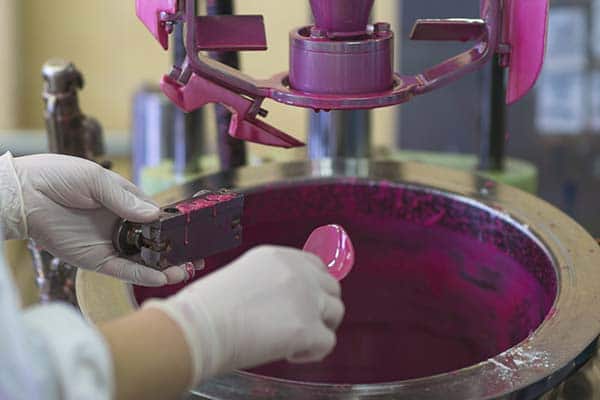
How is Deagglomeration used in Food Processing Industries?
Deagglomeration equipment or mixers have been utilized in different nourishment manufacturing plants, counting breakfast cereal generation and pastry kitchen applications. Our machines have been utilized in depluming raisins as cost-saving test mixer in laboratories or in industrial mixing applications.
How is Deagglomeration Process Applied?
Illustrations of applications: For upgraded advancement of flavours, flavours are isolated, fluids conveyed exceptionally finely, agglutinated materials are pummelled, lecithins are dispersed in preparing operators, and square oil and piece lecithin are broken down.
How Do Ginhong Mixers Effectively Accomplish Deaglomeration?
Some ingredients, when added to liquids, cannot easily break down resulting to agglomerate formation. The high shear action of Ginhong High Shear Mixer workhead rapidly disperses the solids to the surrounding liquids. The result is an agglomerate-free solution in a matter of minutes.
With Ginhong Inline Homogenizer, ingredients are rapidly mixed in a uniform blend with an improve yield and batch to batch consistency. Flow rate of water can be from 1.5m³/h to 110m³/h, depending on the size and capacity of mixer chosen.
Our RX Emulsifier homogenizer utilizes vacuum-filled environment that ensures complete process of dispersing, high shearing, emulsifying and homogenizing creams, lotion, ointment, mayonnaise and other emulsions ranging from 10,000~100,000cps viscosity. A complete agglomerate-free solution results from this mixer.
Powder-Liquid Mix
Powder liquid mix is one of most common processes in mixing applications. Dispersion of powders in liquids is not an easy task especially when using common agitators.
What are Powder-Liquid Mixtures?
Powder and Liquid Mix is a mixture of a solid, powdery, floury materials into oils or liquid solutions. Obtaining a homogenous and consistent mixture of powders and liquids is a challenge most industrial mixer manufacturers meet to satisfy the demands of cosmetic, pharmaceutical and chemical industries.
Why is the Role of Continuous Powder-Liquid Blenders Important in Pharmaceutical Applications Today?
Today, Pharmaceutical industries are investing in a more promising way of manufacturing medicines, tablets, pills, ointments and cream. Continuous mixing is evidently more sought for today. It is an obvious problem in mixing that segregation and agglomeration are often met resulting in inefficient mixtures. Therefore, the development of robust and reliable powder-liquid mixing processes is one of the main challenges in batch process development.
What are the Common Powder-Liquid Mixing Challenges in Mixing Applications?
Air-Inhibition and Foaming
Air is incorporated in the mixture when powders are introduced in the mixer in an uncontrolled rate. This happens when air is trapped in the liquid.
Lumping and Agglomeration
Lump formation happens when powders are not properly introduced in the mixing chamber. Lumping usually happens with high viscous, hard to wet stabilizers and powders such as cocoa. Gelling occurs at the surface making it more difficult to blend and more lumps are produced.
What are Ginhong Mixers Solutions to the Common Powder-Liquid Mixing Challenges?
Ginhong has a range of mixers that are designed to provide the most efficient means of incorporating powder-wetting and dispersion without agglomeration. The selection of which depends on factors such as the batch size, the type of ingredients and the viscosity of the end product.
The Inline Homogenizer with a feeding hopper is a hygienic rotor/stator assembly mixer for rapidly and effectively dispersing powders into liquids at an optimum surface area.
We also have the PX Planetary Disperser Mixer for applications requiring large amounts of high viscous ingredients.
For bulk powder dispersion, Ginhong offers the unique SF Powder-Liquid Mixers capable of incorporating powders at a high speed.
Reclamation
What is Reclamation?
Reclamation or reworking is a process where finished products or inprocess products are reprocessed due to reasons such as being out-of-spec. Finished products which didn’t pass Quality Control standards can be brought back into the production line again and re-manufactured, instead of throwing them out.
What are the Causes of Reclaimation in Production Industries?
Reclaimation would be the solution if for example in a continuous production line, there is a broken machine and the line would need to stop while products are suspended in the upstream. This would typically cause the change of properties in the materials being suspended resulting in being out-of-spec.
What Products are Usually Difficult to Reclaim/Reprocess?
Confectionery products that are usually rich is sugar are more difficult to reprocess as this type of material tends to stick on the walls and end up just being scraped by the teflon scraper. Other products that has chocolate, cocoa and gelatin confectionery are also hard to reclaim.
Not only does this happen in food industries, but also in chemical, pharmaceutical and cosmetic industries. Rubbers, paper and polymers forms large lumps and agglomerates that can cause serious damage to your mixer equipment.
What is the Importance of Reclamation?
With incurring financial crisis and sudden rise in prices of ingredients for mixing, producers increasingly need to rapidly and proficiently reprocess out-of-spec items to maximize profits. A commonplace case would be within the confectionery industry where misshapen desserts have to be broken down so that the sugar can be recovered and reused, as sugar is quite expensive.
What Ginhong Mixers are Effective in Reprocessing Difficult, Sticky Products?
Our Planetary Mixers, Dual Shaft Mixers and Triple Shaft Mixers are the most recommendable industrial mixers for breaking down gums, thickeners and confectionery. The material is made of a high grade Stainless Steel which is a clean and safe metal for conducting food production and reprocessing. We also carry Vacuum Dual Shaft Mixers and Vacuum Triple Shaft Mixers.
Agitate
What is Agitate?
Agitate implies to form something, particularly a fluid, move around by mixing or shaking it. It’s a more formal word with comparable meaning to blend.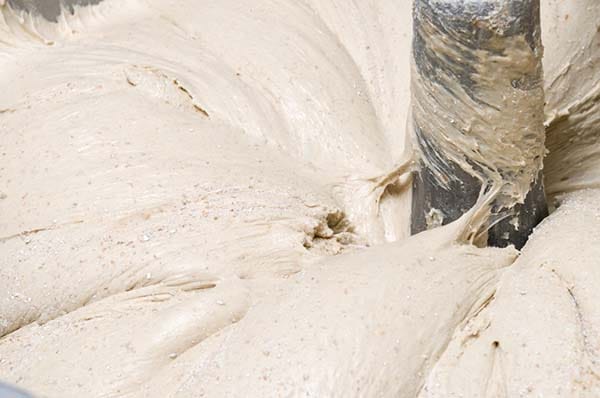
What are the examples used to Agitate?
Fomenters or stirrers come in a tremendous cluster of shapes and sizes, counting marine propellers, foils, hub and outspread stream turbines, entryway and stay stirrer/scrapers, etc. These distinctive sorts of impeller edges characterize the stream created and permit instigators to be utilized for the broadest run of viscosities and clump sizes.
What is an Agitator Mixer?
Mechanical instigators are machines utilized in the business that prepare items within the chemical, nourishment, pharmaceutical and restorative businesses, in a set of blending fluids together.
What are Some Agitation Process Problems Encountered in the Mixing Unit?
Where products of differing viscosities are needed to be processed, blended, powders dispersed and hydrated, an emulsion or suspension formed, solids dissolved or disintegrated and so on, your mixer agitator can take a long time to achieve the required results or, more often than not, is simply not capable.
What can Ginhong Mixers Do to Help?
Ginhong high shear mixers are ideal for these types of applications and can cut mixing times by up to 90%, offering improved yield and product quality and greater batch-to-batch consistency.
We have designed a complete new system specifically for reclamation of larger solids and agglomerated confectionery. This system is composed of a jacketed container that is fitted with a High Shear Bottom Entry Mixer and an In-Line Mixer. It has its own control panel. Reclamation is done best with this specialize mixing unit.
Refine Edible Oils
What is the purpose of Refining Edible Oils?
The reason of refining edible oils and fats is to expel free greasy acids and other undesirable components actually displayed within the crude fabric. This results in a clear, shining, pale colored oil with no off flavors or scents and improved keeping properties.
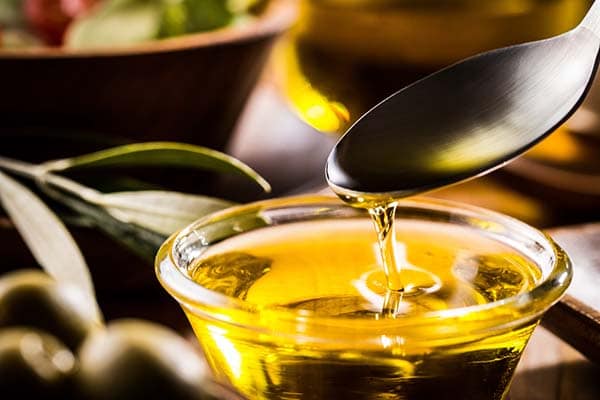
How is Refined Oil Processed?
While the forms utilized can change depending on the sort and nature of the specific oil, most are handled in three stages, neutralization, bleaching and at last deodorization. This is the three examples of processing edible oils. Some case in order to have the premium quality oil, all refining process will be required.
What are the Examples of Refined Oil?
There are numerous diverse sorts of commercially refined vegetable-based oils, counting canola or rapeseed oil, soybean oil, canola oil, corn oil, sunflower oil, safflower oil, and shelled nut oil. The non-specific cooking term "vegetable oil" alludes to a mix of an assortment of oils frequently based on corn, soybean or sunflower oils.
What Can Ginhong Mixers Do For You?
For a wide variety of applications, Ginhong high shear mixers can also be used in refining of edible oils. Some processes require continuous operations such as degumming and neutralization of oils. Not to mention, addition of reagents is a difficult process that requires critical distribution of the acid over the oil surface, then follows the intensive mixing to induce chemical reaction and maximize yield.
In our inline high shear mixer, the acid is added in the inlet. The process of mixing is carried out by drawing the ingredients into the workhead and intensely mixed in the high shear zone. Fine droplet size is obtained with fully reacted products and maximum yield.
Ginhong high shear mixers offer several advantages in this process and are the preferred choice for companies using this method.
Particle Size Reduction
What is Particle Size Reduction?
Particle Size Reduction is the process of altering/reducing the size of the ingredients up to its optimum state as to assure that it attains the right specifications and properties.
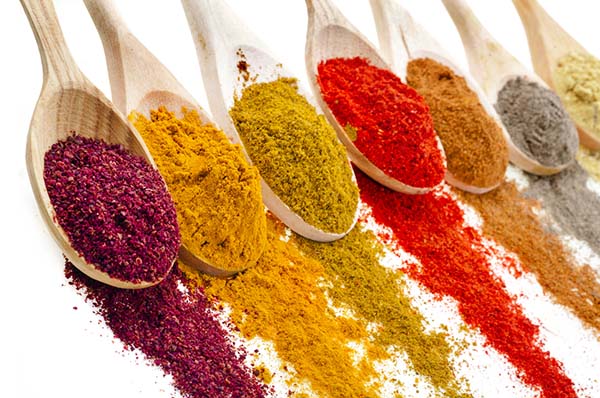
What are the Objectives of Particle Size Reduction?
In materials processing industry, size reduction or comminution is usually carried out in order to:
- Increase the surface area as in most reactions involving solid particles, the rate of reactions is directly proportional to the area of contact with a second phase.
- Break a material into very small particles in order to separate the valuable amongst the two constituents.
- Achieve intimate mixing.
- To dispose solid wastes easily
- To improve the handling characteristics.
- To mix solid particle more intimately.
What are the Factors Affecting Particle Size Reduction?
Hardness
The degree of particle size reduction will depend on the hardness of the product.
Material Structure
Some ingredients are homogenous by nature. These are much easier to break as it has lines of weaknesses where the material will split.
Abrasiveness
Abrasiveness is a property of hard materials. It can be a limitation to the conventional mixer used. More abrasive materials are more difficult to grind and mix with other homogenous materials.
Softening temperature
When processing reduction of particle size, heat is generated along with it that can soften the substances. Waxy substances, such as stearic acid, or drugs containing oils or fats are examples that may be affected. Some methods can be used to overcome this like cooling the mill, either by a water jacket or by passing a stream of air through the equipment.
Moisture content
It is found that materials do not flow well if they contain between about 5 and 50 percent of moisture. Under these conditions the material tends to cake together in the form of balls. In general, grinding can be carried out satisfactorily outside these limits.
How can Ginhong Mixers Process Particle Size Reduction of Materials?
Ginhong carries a wide range of industrial mixers for processing any kind of material, be it with different viscosities or material properties. They can effectively carry out particle size reduction processes, achieving rapid and uniform milling of solid and semisolid materials to a low micron size.
Ginhong offers inline homogenizer designed for processing even the hardest materials such as pigments, dyestuffs, filter cake, titanium dioxide, etc.
Conclusion
Mixing is the heart of almost all manufacturing processes. The industrial mixing unit should not be compromised as it is the life of manufacturing processes. Ginhong industrial mixers are built for a ton of applications, offered in various configurations to choose from to suit your mixing application needs.

